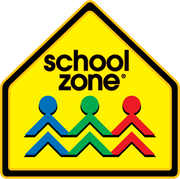With the countdown to spring break fast approaching go-time, thinking through ways to bridge the less action-packed moments can keep things relaxing for everyone.
Exploring the state or the globe
In January, Christopher Elliott, writing for USA Today reported that booking patterns suggest many Americans driven by a "softer economy," are opting for a "'closecation'—traveling to a region within three to four hours of driving distance from home."
On the other hand, with most travel restrictions of recent years lifted, some are planning long-awaited distant destinations.
Whether staying close to home or venturing further afield, when traveling with kids it's important to plan ahead and be ready for those "Are we there yet?," "How much longer?", "I'm hungry!" blues, not to mention the inevitable unexpected situations that always come with travel but maybe a little more often these days.
While things do go off script from time to time, In a New York Times travel guide post titled "How to Travel with Children," Shivana Vora writes about the need for "keeping kids engaged, at any age," breaking down the tips by toddlers, school-age children, and teenagers. The article says, "The key to keeping kids 5 and older engaged on a family trip is to get them involved in the planning, even in a small way."
Packing, snacking, and trip-tracking for kids

Of course, part of planning is deciding what to pack. Upgraded Points, a site that provides information on "credit cards, reward programs, travel information," and more, posted "33 Best Tips for Family Travel (Have Less Stress and More Fun!" by Jeff Browson.
One of their best easier-said-than-done pieces of advice is to "pack as little as possible." Browson says that overpacking is sometimes the result of parents' "tendency to pack everything kids use at home," thinking it will help keep things feeling familiar and consistent. (Side note: be sure to check airline rules for car seats, strollers, collapsible wagons, and similar equipment.)
Another gem from Browson is: "Outline the trip for kids." Browson notes that "When kids are uncomfortable, they aren't happy, which can happen if there are too many new things going on."
And one more biggie for lots of reasons: "Always have snacks available for your kids!" Browson says, "You never know how long you might have to wait between meals." He adds that among those reasons,"There could be a delayed flight, unexpected traffic getting to your hotel, or a tour that takes a bit longer than you thought it would."
Keri Snyder posted "Travel Hacks for Kids" to Your Modern Family blog, gathering up great ideas from a variety of sources, including combining snacks with activities. Noting that "Kids love countdowns of any kind," Snyder touted Heather Haupt's Countdown to Arrival as "just brilliant." Each hour kids get a new activity to complete, often merging it with a snack, for example, "Fruit leather and The Tale of Peter Rabbit on tape."
Snyder also notes that "When the time in the car or airplane is going to be long, a scavenger hunt is a great option." Kids can keep their eyes peeled for landmarks, cars, and other stuff. She linked to Hobby Lark's "5 Super Fun Scavenger Hunt Ideas," which also suggests themes and ideas for others.
Playfully practice skills during down time

Wait times and car times are good times for learning.For a subscription rate of just $6.99/month, which includes a 7-day trial, multiple kids in the family, on different devices, can all play on Anywhere Teacher, the online learning program from School Zone. Or for a limited time, go to schoolzone.com and sign up for a 30-day trial using the code in the website top-of page banner. With more than 3,000 activities for kids 2-8, and more added all the time, every young child in the family can find something fun. Plus, there are curriculum-based learning paths for preschool, kindergarten, and first grade.
A few cute, colorful print workbooks for preschoolers and kindergartners that can slip easily into a tote bag or carry-on include Color by Number Underwater Fun Workbook, Color by Letter Farm Fun Workbook, Color by Shape Animal Fun Workbook, and Hidden Pictures Around the World Activity Zone Workbook. They sharpen the letter, shape recognition, and visual perceptual skills needed for early reading and the fine motor skills needed for writing.

Two other workbooks for ages 3-5 are Connect the Dots Preschool Workbook, which starts out using numbers 1-10, then moves on to 1-20, and 1-25 as the book progresses, and Mazes Preschool Workbook, which boosts focus, reasoning, problem-solving, and eye-hand coordination.

Making kids part of the planning process, going over the plan, and having plenty of snacks and activities for the unplanned (and the unexciting), will help spring break travels be low-stress and high-fun.












